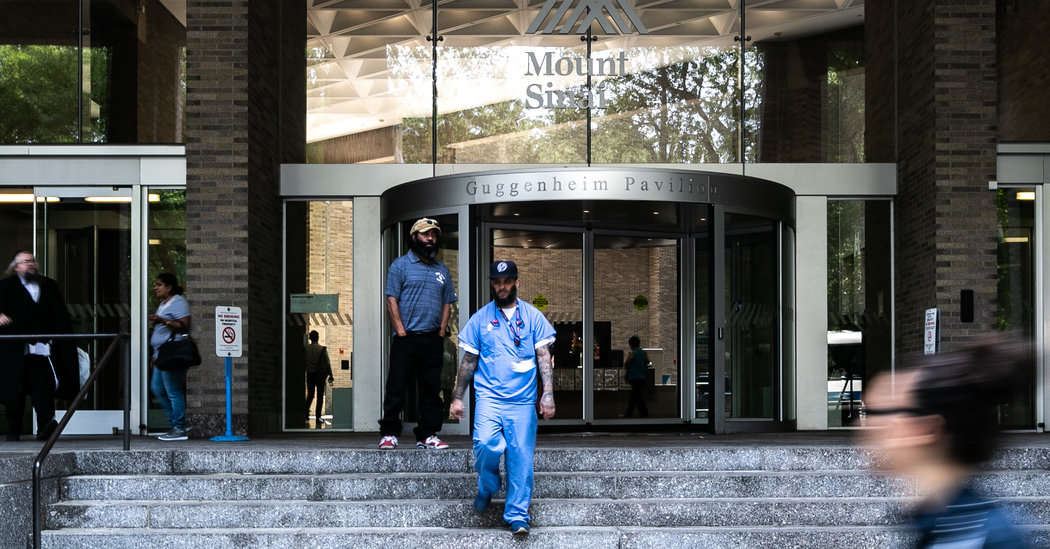
[What you need to know to start the day: Get New York Today in your inbox.]
For several weeks, New York City has been at the center of a national debate about how many nurses should be on duty at hospitals.
Nurses unions have pressed for rules setting minimum staffing levels, arguing that having too few nurses leaves patients at risk. Hospital officials have countered that they need flexibility in deploying their workers and should not be bound by rigid ratios.
That dispute spurred more than 10,000 nurses to threaten to walk off their jobs this month at three of New York’s biggest hospital systems.
But on Tuesday, the union that represents the nurses said it reached a groundbreaking agreement with the hospitals that would lead to the hiring of 1,450 additional nurses and for the first time establish minimum ratios of nurses to patients.
“That’s what makes this agreement historic,” said Anthony Ciampa, first vice president of the New York State Nurses Association. “We now have a voice in the process and a real say and a real mechanism in which to challenge patterns of staffing shortages and to get those rectified.”
Mr. Ciampa said the contract would provide what the union has failed to achieve through legislation in Albany. California is the only state that requires minimum ratios of nurses to patients in hospitals. Massachusetts voters rejected the idea in a statewide referendum last fall.
The four-year contract with the Mount Sinai, NewYork-Presbyterian and Montefiore hospital systems calls for awarding annual pay raises of 3 percent, filling about 800 vacant nursing jobs, and spending $25 million a year to hire additional nurses. It still must be ratified by the union’s members.
More important to the nurses — and what took them to the brink of striking — was getting the hospitals to concede to the setting of minimum ratios of nurses to patients in each of their treatment units. Nurses in New York have pressed for ratios for years, but they said it took the imminent threat of a strike to extract a compromise from the hospitals.
The ratios that the three hospitals will adopt have not yet been decided. In California, they range from one nurse per patient in operating rooms and trauma units to one nurse for every eight healthy babies in a nursery ward. In New York, as an example, a nurse in a neonatal intensive care unit at NewYork-Presbyterian said the acceptable ratio was at least one nurse for every two babies, but the workload there was often double that.
The hospitals also agreed to settle disputes about staffing through an outside mediator, giving the nurses a forum for airing grievances about management’s compliance with the agreed-upon ratios.
For their part, the hospital systems, which negotiated with the nurses collectively, said the agreement would usher in a more cooperative process for deciding how to deploy nurses and the employees who support them in caring for patients.
“This significant investment in our nursing teams will ultimately benefit patients in the long term, while preserving hospitals’ flexibility to deliver the individual, tailored health care that our institutions are known for around the world,” said Marc Kramer, the lead negotiator for the hospitals.
The hospitals balked at using the term “ratios” because it has become contentious since California instituted them by law in 2003. They said they would retain “flexibility” to make staffing decisions based on patient needs.
But Mr. Ciampa said representatives of the nurses would meet with managers within a month after ratification to set minimum staffing levels for each unit in each of the hospitals, based on the number of patients treated there.
Mount Sinai, NewYork-Presbyterian and Montefiore are three of the largest hospital systems in New York. The agreement applies only to them, but the nurses union said it would likely affect coming negotiations with some of the biggest hospitals in the city, including Maimonides Medical Center in Brooklyn, Flushing Hospital Medical Center in Queens and Richmond University Medical Center in Staten Island.
“This is going to have a very positive impact, and it will be the trendsetter of the industry,” Mr. Ciampa said. “What we decide in these major city hospitals tends to set the framework for other hospitals.”
Still, no state has followed California’s lead in requiring that hospitals maintain specific ratios of nurses to patients, though some, like New Jersey, make hospitals post their staffing ratios for patients to see.
In Massachusetts, the hospital industry successfully fought off a campaign by nurses last year that would have required hospitals to adopt staffing ratios. An independent study concluded that the proposed changes would have added as much as $949 million to health care costs in that state.
But Mr. Ciampi said the acceptance of ratios in three of the most prominent hospitals in New York City could add momentum to the demands of nurses elsewhere. “We’re moving slowly but surely, I feel, in the right direction,” he said.
Sean Clarke, executive vice dean of the N.Y.U. Rory Meyers College of Nursing, said hospitals and nurses across the country have been wrangling over staffing levels and how to set them for many years.
“This would be seen as yet another chapter in that ongoing story about how to make it work,” he said of the tentative contract agreement. But he added that it was too soon to tell if it would reverberate beyond the city.
“A lot of people would watch the situation in New York,” Mr. Clarke said. “People would take notice.”

